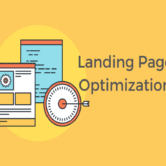
Explain the role of clarity and readability in web content
Introduction
In the digital space, where users skim more than they read, clarity and readability are crucial elements of effective web content. These qualities ensure that information is easy to understand, quickly digestible, and actionable. Whether users are browsing a blog, navigating a product page, or reading a service description, they want content that communicates instantly and smoothly. Clear and readable content enhances user experience, builds trust, and increases the likelihood of engagement, retention, and conversion.
Helping Users Find Information Quickly
Online readers typically scan content rather than reading every word. Clear headlines, subheadings, and well-structured paragraphs allow users to locate relevant information rapidly. When content is easy to follow, users are more likely to stay on the site and explore further.
Reducing Cognitive Load
Clarity and readability reduce the mental effort required to process information. Using simple language, active voice, and short sentences helps users understand the message without confusion or fatigue. This is particularly important in a fast-paced online environment.
Improving Accessibility for All Audiences
Readable content is inclusive content. It benefits users with cognitive disabilities, non-native speakers, and those accessing content on mobile devices. Writing that is free from jargon and structured for comprehension ensures accessibility for a broader audience.
Enhancing Brand Credibility and Professionalism
Clear, well-edited content reflects attention to detail and professionalism. It shows that the brand values the reader’s time and understands their needs. Poorly written, cluttered content can damage credibility and reduce trust.
Encouraging Engagement and Action
Users are more likely to interact with content that is easy to understand. Whether it’s subscribing to a newsletter, making a purchase, or sharing a post, clarity in content increases the chances of meaningful user action.
Supporting SEO and Search Visibility
Readability influences dwell time and bounce rates, both of which are considered by search engine algorithms. Well-structured, easy-to-read content that keeps users engaged can improve a site’s SEO performance over time.
Facilitating Better Mobile Experiences
Mobile users face smaller screens and distractions. Readable content with responsive formatting, short paragraphs, and clear CTAs improves usability and ensures a seamless experience across devices.
Complementing Visual and UI Design
Even the best design can’t compensate for unclear text. Readable content complements visuals, reinforces messages, and ensures that the design’s purpose is effectively communicated through words.
Reducing Support Queries and User Frustration
Clear instructional or informational content helps users understand products, processes, or services without needing additional assistance. This reduces support requests and enhances overall satisfaction.
Conclusion
Clarity and readability are not optional—they are foundational to effective web content. They ensure that users can understand, trust, and engage with the message quickly and confidently. In an age of information overload, simple and clear writing is not just good practice—it’s a competitive advantage.
Hashtags
#clarityinwriting #readablecontent #webcontentwriting #contentstrategy #uxwriting #digitalcommunication #effectivewriting #writingtips #contentclarity #userexperience #readabilitymatters #digitalaccessibility #clearcommunication #webusability #onlinereaders #seoandux #writingforweb #mobilecontent #contentstructure #engagingcontent #brandcredibility #contentcreation #webwritingbasics #contentoptimization #writingclarity





